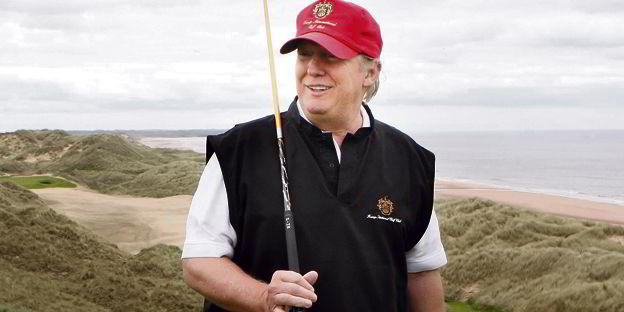Coming on the back of the Scottish Government’s offshore planning approval at the end of March for the European Offshore Wind Deployment Centre (EOWDC), to use the official title, it is another step towards creating a facility that will work alongside the forthcoming National Renewable Energy Centre (NAREC) in Northumberland to bring down costs in the sector.
The EOWDC is particularly important to the future of the Scottish industry, of course, since its tests will be the most relevant to nearby proposed projects such as Beatrice and Moray.
But not so fast. Hours after the exploration announcement, Vattenfall then cast doubt on the project by saying it needed to pull in other investors. So where does this leave us?
Despite getting government approval, the EODWC is far from being a done deal. The Aberdonians took more than a decade to reach a consensus on a new bypass recently, and have feuded bitterly over proposals for a city square and Donald Trump’s golf courses. Now the location of the EOWDC’s proposed onshore substation is being opposed by the entire adjacent village. Aberdeenshire Council has twice delayed that planning decision and may yet turn it down, forcing a change of location.
Then there is Donald Trump, who has ironically morphed into witchfinder general for the entire project. Incensed over the proposed centre’s effect on the view from his golf resort, the ghastly tycoon’s people have vowed to battle through the courts to see the government permission reversed.
A writ is being issued next week, which they say could delay the centre by three years in the Scottish courts and another three in Europe. Even before you consider Vattenfall’s potential legal fees, the centre needs to be open by about 2015 to benefit the next phase of the industry.
The backdrop is that Vattenfall, like most electricity companies, has had to batten down the hatches. Hit by falling electricity demand and prices during the economic crisis, underlying profits fell last year and were stagnant in last week’s first-quarter results for 2013.
The company completed a programme to remove SKr6bn ($910m) in annual costs last year and is now vying to cut a further SKr4.5bn a year by the end of next year, cutting the annual bill by about 7%.
Wind investment was cut drastically in 2011 and 2012, averaging SKr2.9bn each year compared to an average of SKr8bn in the previous two years. With net debt back on track, the new five-year plan is to spend SKr3.8bn a year.
This boost is welcome but must be spread across Vattenfall’s various countries of operation. Admittedly the vast majority of its wind investment has gone into the UK in the past five years, but the new spending figures are not huge relative to the likes of Iberdrola (£740m a year 2012-14, half of which in the UK) and SSE (around £850m last year, all of which UK and Ireland).
In the UK alone, Vattenfall’s in-tray includes its gargantuan 7.2GW offshore East Anglia joint venture with Scottish Power; the 51MW Kentish Flats extension; 13 onshore wind farms including five in Scotland; and the 1.4GW NorthConnect interconnector between Aberdeenshire and Norway.
Even if all of its wind investment budget goes on the UK, the 1.2GW first phase of East Anglia looks in danger of consuming a very large share of the whole pie if it begins on schedule in 2016. So Vattenfall’s desire for new EOWDC investors is entirely predictable, especially when it is not even planning any offshore wind projects in Scotland’s wild waters.
Whether anyone will invest with Trump et al breathing down their necks seems highly debatable. Vattenfall is not due to take a final investment decision until next year. Exploration work or no, the odds must be shortening that EOWDC will not happen at all.
Steven Vass is deputy business editor of the Sunday Herald and a regular contributor to New Era magazine

